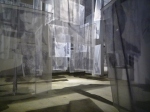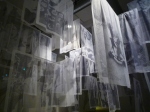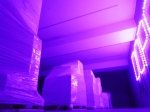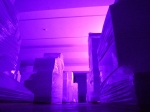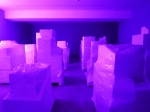The fact that the two galleries I visited today were old car factories is evidence of how gritty industrial workhouses can be renovated into a pristine space for exhibiting visual art today, similar activity to that which I had witnessed taking place in Bilbao three years ago (see images below). The Foundation of Mario Merz in the former Lancia building was a large warehouse with an unforgettable installation of artwork by Christian Boltanski titled ‘After’. This display, accompanied by a documentary starring the artist, collectively provided a richly evocative reminder of the frailty of human presence and memory. The photographs inherently taught me about time, its passing, and the significance it has on the individual.
In comparison to c.2000 AD the works here were a lot more open to interpretation and appeared untitled, unlabeled and altogether inseparable among the installation. On the objective-subjective spectrum this display stood at the ‘white cube’ end, whereas my show had been intentionally more museological. From my perspective the stacked, veiled objects downstairs presented a city of white walls illuminated by the glow of a hundred neon suns. The vast revolving photographs upstairs were similarly architectural and nondescript about the viewer’s navigation.
The Pinacoteca Agnelli, which I visited earlier on, was not so evocative and the Ed Ruscha display felt too culturally estranged, despite the artefacts loaned from the city’s own museums exhibited alongside. But when I stepped out of the gallery onto the speedway roof-terrace I was taken to another world, a vast open space (and I had wondered why this building made such a mark on my map)! Now home to the Lingotto railway station and a shopping complex, this former Fiat factory offers art gallery ticket-holders a chance to relive a small part of its history (with the help of a little imagination), by roaming across its roof. While walking along the racetrack it was easy to imagine a dated Fiat 500 speeding past, while machines hum in the warehouses below. From up here I had a clear view over the city. However, there was a stronger presence of some utopian vision engineering a fractured urban landscape.
Peering over the barrier to the west I saw a patchwork of hedges and trees that turned natural plant growth into a car production line. As in the landscape painting tradition, the greenery wore square corners; the view from the roof down to the dense forest courtyard was sunk deep within a concrete frame. This was a clearer distant future than the one hinted at in c.2000 AD, where the growth of (what is left of) nature, is almost completely under the rule of man.
The building’s height had obscured the skyline, giving the appearance of a concrete desert extending as far as the eye can see. Architecture had turned into landscape, and natural wilderness was extinct. The omnipresent blue background, with its soft sun and ‘cloud streets’, completed the vision of a desolate concrete planet. On this grey plateau two spaceships stretched into that sky: one was the boxy penthouse containing the Pinacoteca’s permanent display, and the other was a rounded glass capsule from a 1960s sci-fi comic book. Several tubular blue tree-trunks lined the path at regular intervals like the formulaic planting of their leafy arboreal ancestors in the 21st century down below.
What had felt like a graveyard of the late 20th century, now became a fictitious ’40th century’ landscape – a surreal vision shaped by images of moon landings and renderings of some faraway planet’s surface. And this dream began before I had even stepped out onto the terrace. The red tinted glass at the gallery’s foyer created something utopian and almost intergalactic, warping my understanding of reality on planet earth. The walk around the track was more evocative than indoor museum exhibits, and walking the path of the motorcar had turned out to be monumentally thought-provoking. After an hour on the roof, I stepped back through the portal to the other side of the glass. The elevator plunged me back into the 21st century and the dream was over.
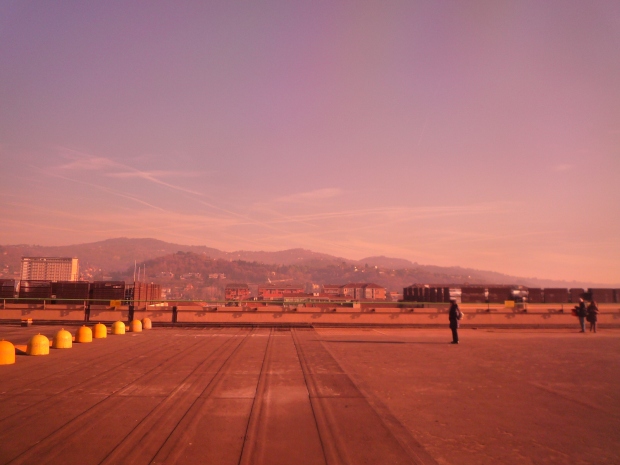
Looking east, through the glass facade (under a Martian sky).




